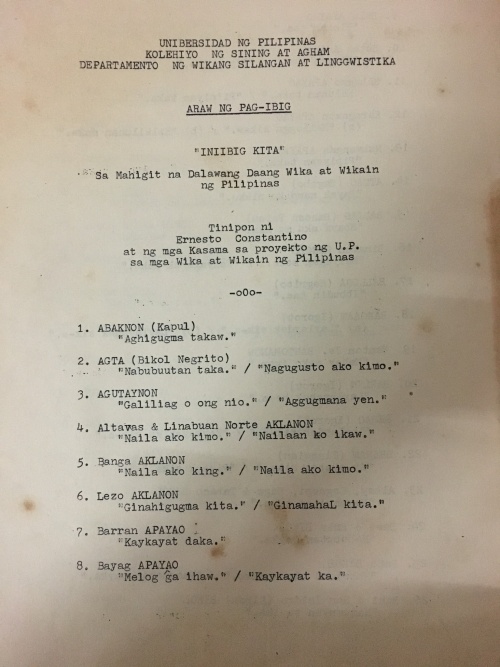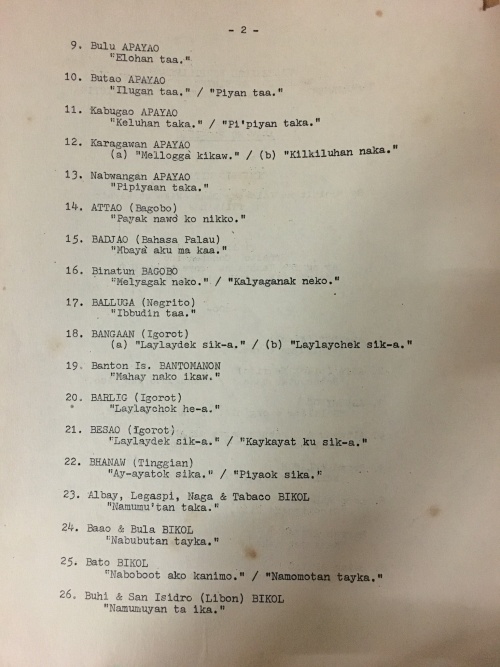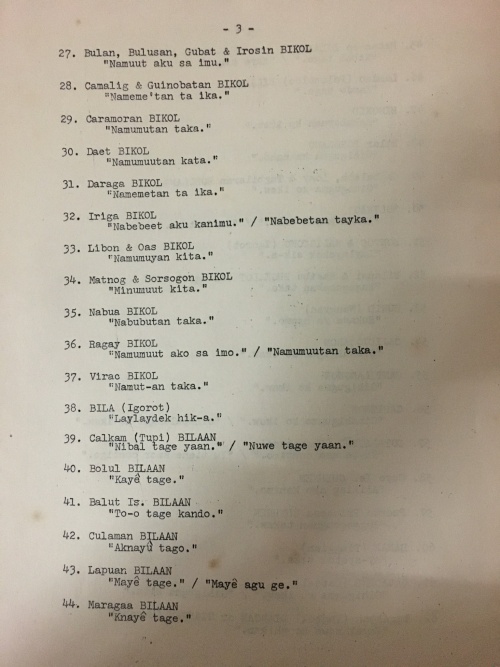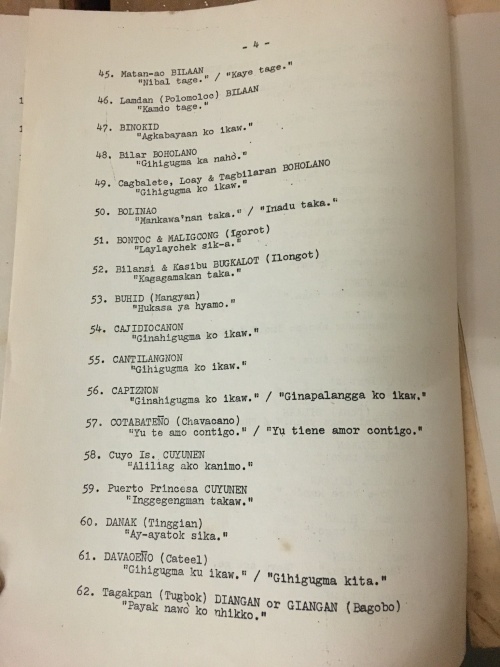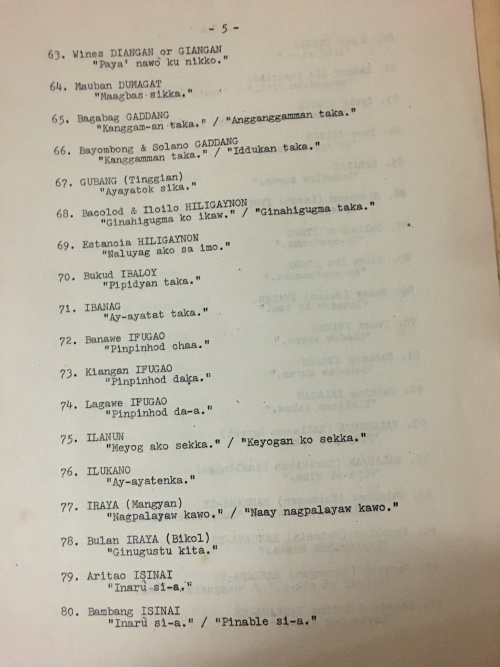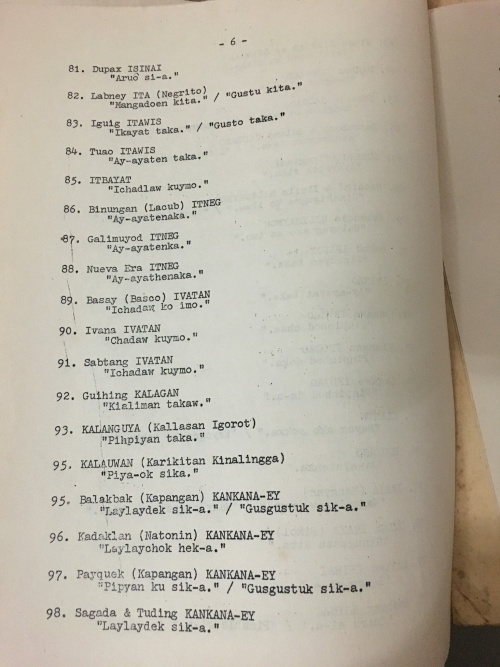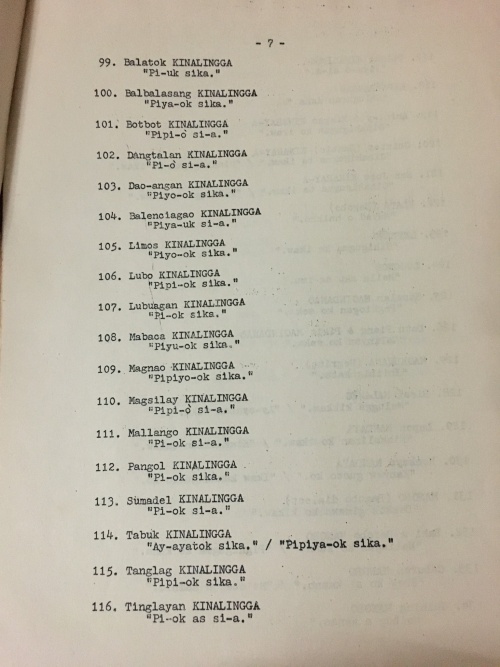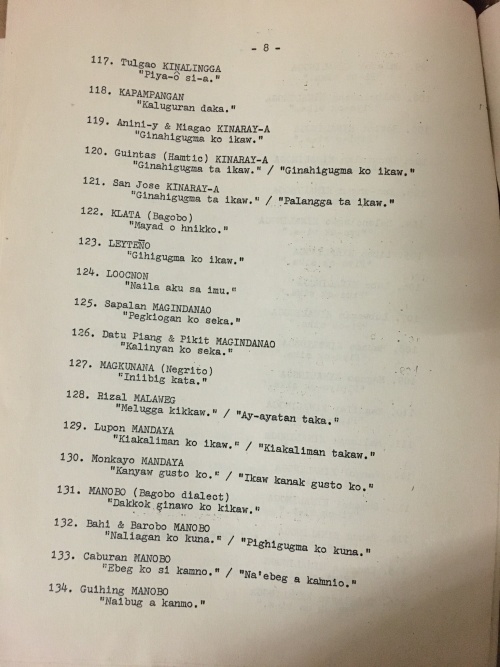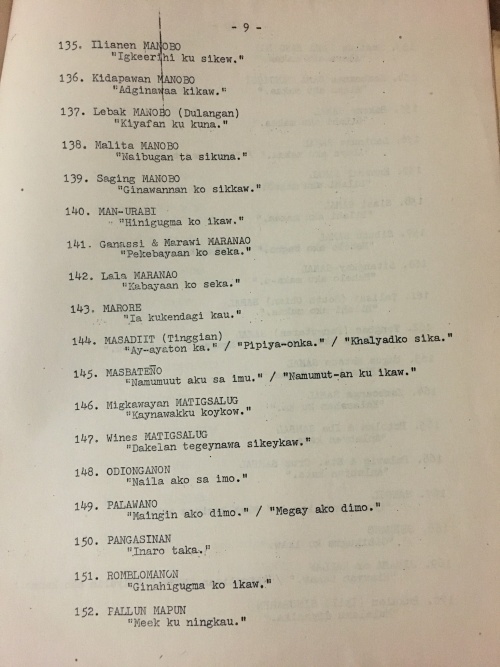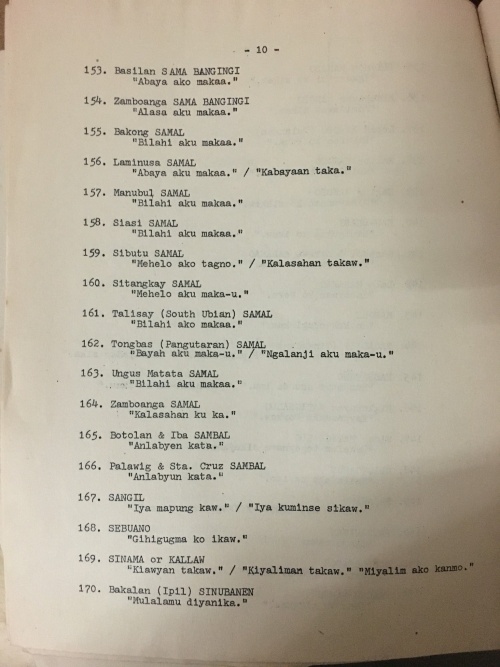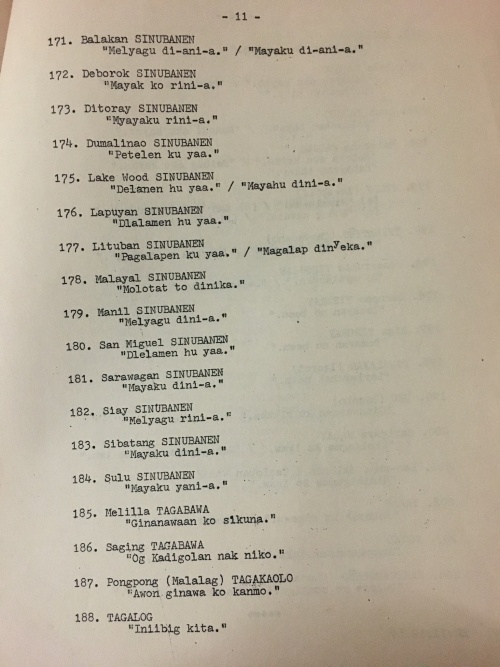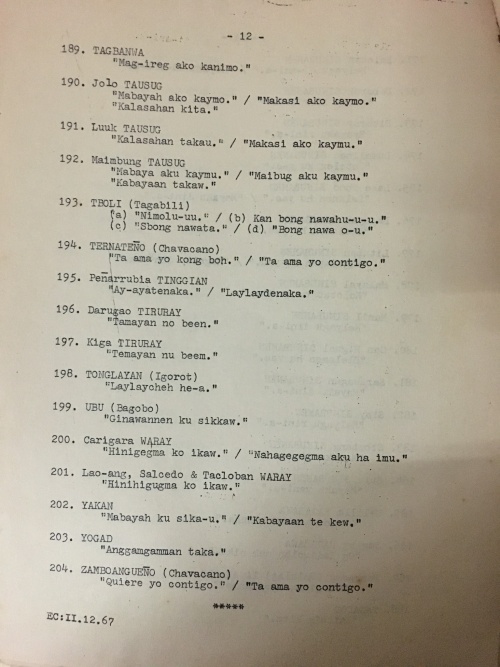'Iniibig kita': UP Department of Linguistics shares ways to say 'I love you' in over 200 Philippine languages
In time for Valentine's Day, the University of the Philippines Department of Linguistics on Facebook shared a 1967 study showing how to express love in over 200 Philippine languages and dialects.
The UP Department of Linguistics on Feb. 14 said Ernesto Constantino and other department members compiled the list.
Constantino was a pioneering figure in Philippine linguistics, serving the university for 36 years from 1959 to 1995. He made significant contributions to the adoption and development of Filipino as the national language.
"Ginagamit niyo pa rin ba ang mga ito? Ano ang hindi nila naisama?" the UP Department of Linguistics said.
The most promiment entry in the list is Tagalog's "Iniibig kita."
But what about the more common "Mahal kita" as used especially in Filipino movies and songs?
In a lecture titled "Lexicon Unpacked: Pag-ibig," linguist Jesus Hernandez cited the 1860 Vocabulario de la Lengua Tagala by Juan de Noceda and Fr. Pedro de Sanlucar. There, "mahal" originally pertained to something that's expensive (caro, de mucho valor, precioso, noble).
National Artist for Literature Virgilio Almario, together with Elvin Ebreo and Anna Maria Yglopaz, in their 2016 translation defines "mahal" as "mataas ang halaga, mahalaga, marangal."
The 1972 English-Tagalog dictionary of Jose Villa Panganiban also defines "mahal" as being "expensive" and "high-priced," Hernandez noted. Other definitions include "beloved," "held in great esteem," "noble," and "highly born."
"Does this mean na through time naging love ang kahulugan?" he said, noting of estimation of worth. "And you thought it's all romantic. It's all about the moolah."
Hernandez, then, said it's "ibig" that has more passion, basing from its etymology referring to desire and cravings. Kapampangan's "ibug" means having a taste for something, while Tiruray's "ibeg" pertains to appetite or saliva. The word also has something to do with a snake's venom, hinting at intensity—even risk—as seen in the expression "Makamandag ang pag-ibig."
Here's how you can say Those Three Words in other Philippine languages and dialects.



